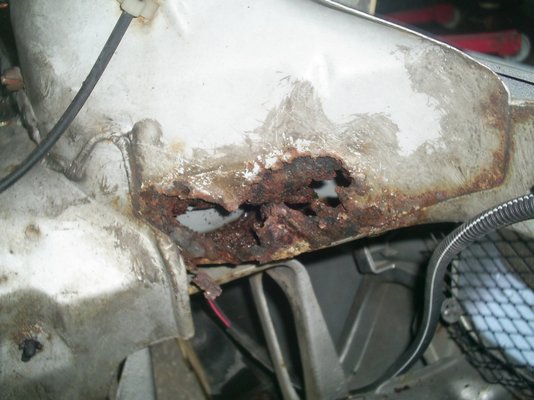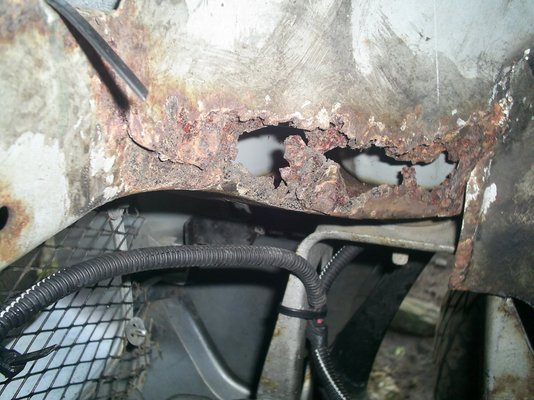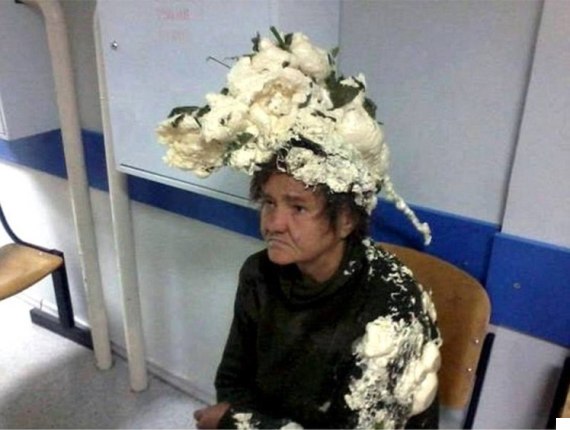I am busy working on the daughters Suzuki Jimny and one of the jobs is to repair a couple of rust patches on the body front lateral box section cross member. The rust is right next to the body to chassis mounting points . (these are unaffected structurally).(the Jimny has a detachable body) This cross member also suffers the rust around the headlamps and in the wheel arches on the same cross member. I have already repaired those areas a couple of years ago. These two new areas are in the engine compartment and access is impossible with the engine in. The clutch needed changing and so I decided to remove the engine to do that and then give myself the chance to repair the x member. The drivers side is behind the steering box so that had to be moved to be able to get at it. Now the reason this box section rots is that water is getting in to it as I found out when I cut the rot out. From where, I do not know, as it is supposed to be a fully welded structure but it does have a number of separate panels which are spot welded together and seam sealed so I should imagine through there.
To get to the point of the title of this thread I wondered if filling the cavity with expanding foam, after I have welded the repairs in, is doable as a sealing agent by filling the void and hence the water has no where to go. Has anybody used it in this sort of structure before? After welding I would drill a hole the size of the foams tube to insert it and then fit a grommet to seal it.
To get to the point of the title of this thread I wondered if filling the cavity with expanding foam, after I have welded the repairs in, is doable as a sealing agent by filling the void and hence the water has no where to go. Has anybody used it in this sort of structure before? After welding I would drill a hole the size of the foams tube to insert it and then fit a grommet to seal it.



 we watched as they went sort of pop bang & lower seam became detached & yes it was a pig to remove to re weld them
we watched as they went sort of pop bang & lower seam became detached & yes it was a pig to remove to re weld them

